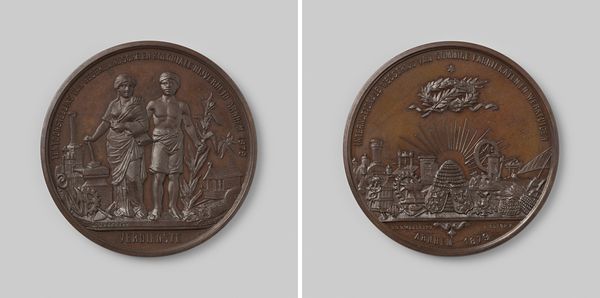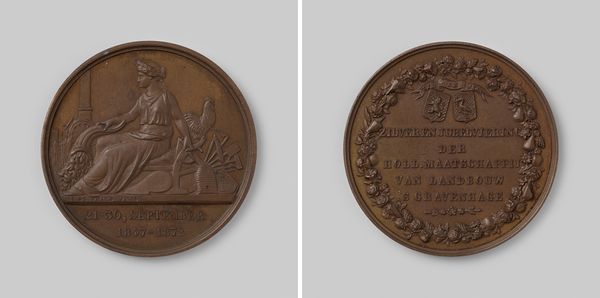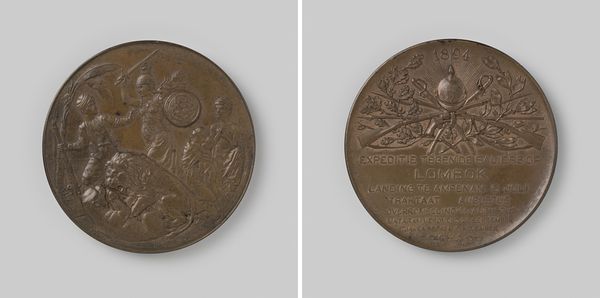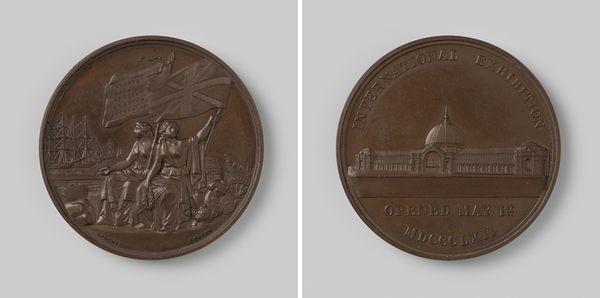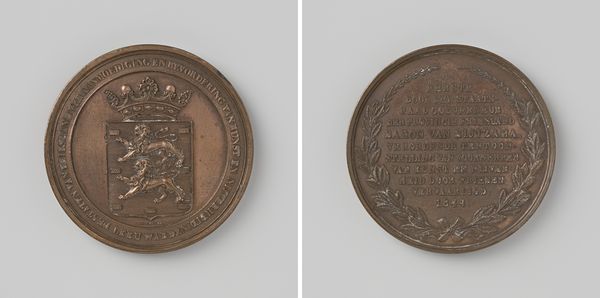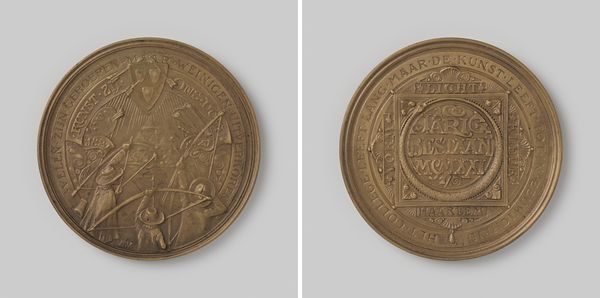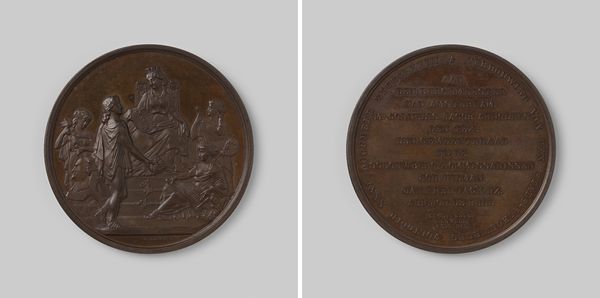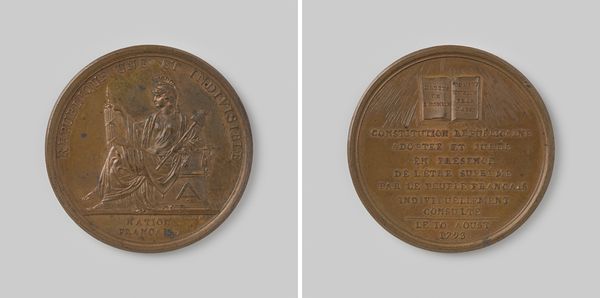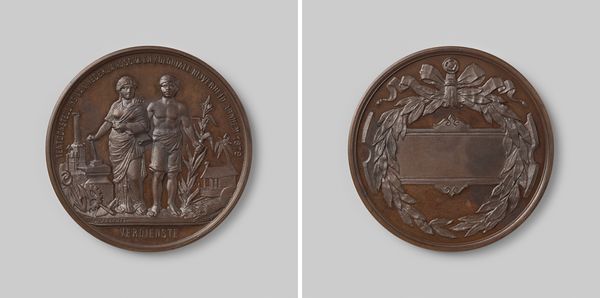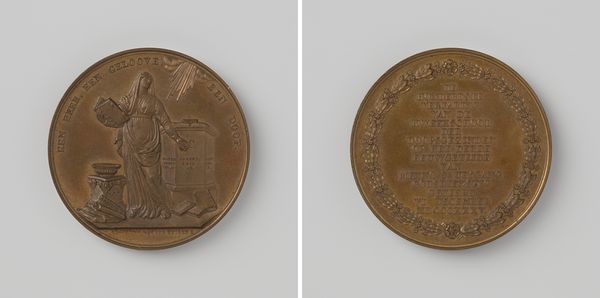
Overbrenging van het lijk van Napoleon Bonaparte van St. Helena naar Frankrijk 1840
0:00
0:00
carving, relief, bronze, sculpture
#
neoclacissism
#
carving
#
sculpture
#
relief
#
bronze
#
sculpture
#
carved
#
history-painting
Dimensions: diameter 5.7 cm, weight 97.13 gr
Copyright: Rijks Museum: Open Domain
Curator: Today, we’re examining Jean-Pierre Montagny’s bronze relief, "Overbrenging van het lijk van Napoleon Bonaparte van St. Helena naar Frankrijk," or "The Transfer of Napoleon Bonaparte’s Body from St. Helena to France," created around 1840. Editor: Immediately, I'm struck by the contrast in texture between the smooth, almost reflective surface of the background and the intricate, densely packed imagery of the central scene. The interplay of light and shadow must be quite captivating in person. Curator: Indeed. The commemorative medallion encapsulates a crucial moment in French history, specifically, the symbolic return of Napoleon's remains nearly two decades after his death on the island of St. Helena. The event itself was orchestrated to bolster the legitimacy of Louis-Philippe's July Monarchy. Editor: That explains the dense composition and the careful attention to detail in depicting the procession. The figures are small, yet each contributes to the overall sense of grandeur and solemnity. It evokes the historical painting conventions of the Neoclassical style. Curator: Precisely. Montagny consciously employed neoclassical elements to ennoble the event. The architecture is reminiscent of Roman triumphs, emphasizing the renewed glory being bestowed upon Napoleon even in death. It was crucial to forge a link between the Napoleonic legacy and the contemporary political climate. Editor: The very crispness of the lettering, circling the scene— "Gloire," "Honneur"… reinforces this calculated messaging. Semiotically, it serves to guide the viewer's understanding and reception of the central imagery. Each word contributes to the intended, controlled narrative. Curator: And "Tout Pour la France"—"Everything for France". These were not merely decorative choices but pivotal aspects of crafting and disseminating a particular narrative about national identity and imperial destiny at a very specific moment. Editor: Looking closely now, the artist masterfully employed relief sculpting, capturing nuances of depth within such limited space. Curator: This bronze relief showcases not only artistic talent but also demonstrates how art functions as a tool for political messaging, contributing significantly to historical narratives. Editor: It underscores how an artwork's form, through compositional elements, participates in shaping, guiding, and memorializing cultural perception. Curator: Ultimately, a very thought-provoking work. Editor: Absolutely, a synthesis of form and propaganda.
Comments
No comments
Be the first to comment and join the conversation on the ultimate creative platform.
